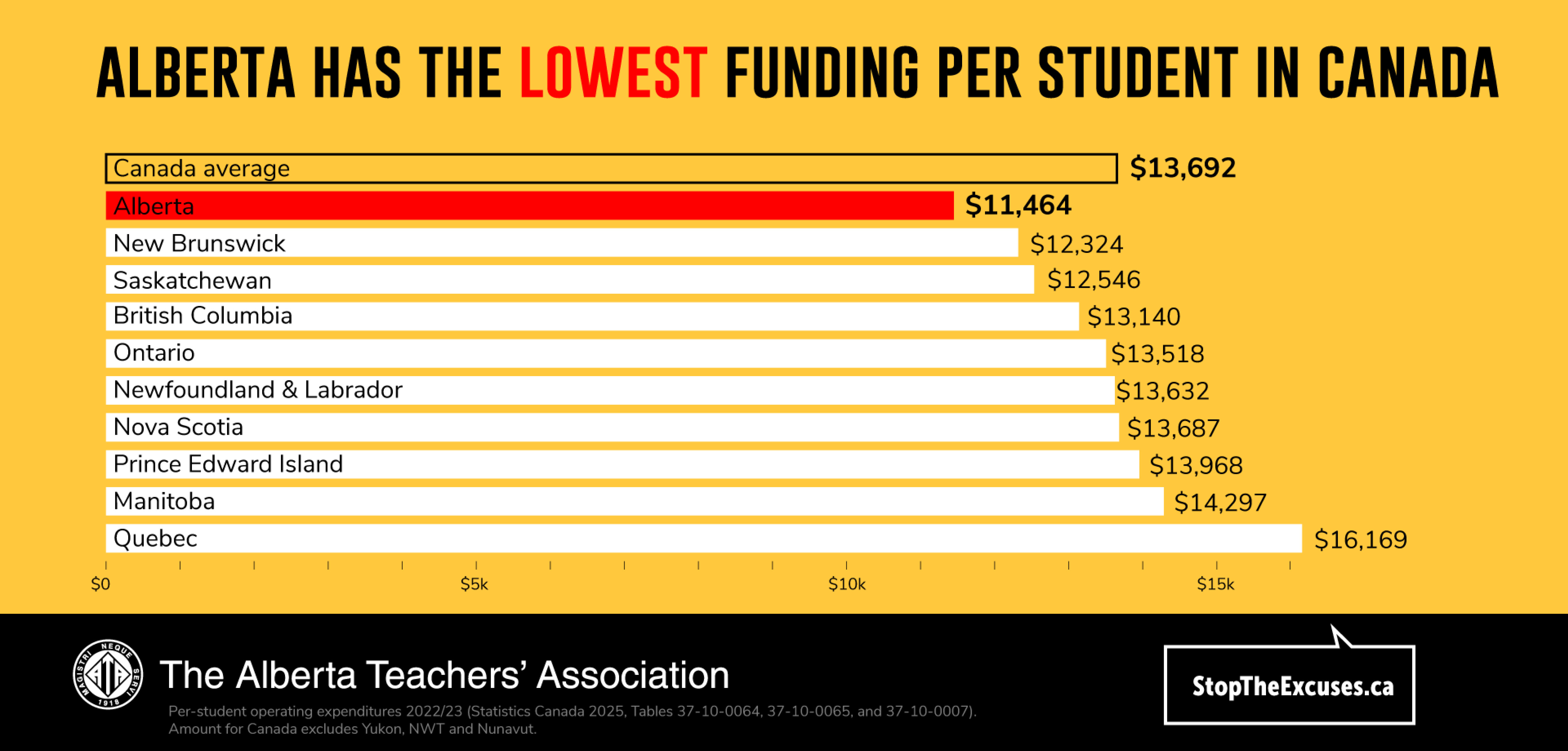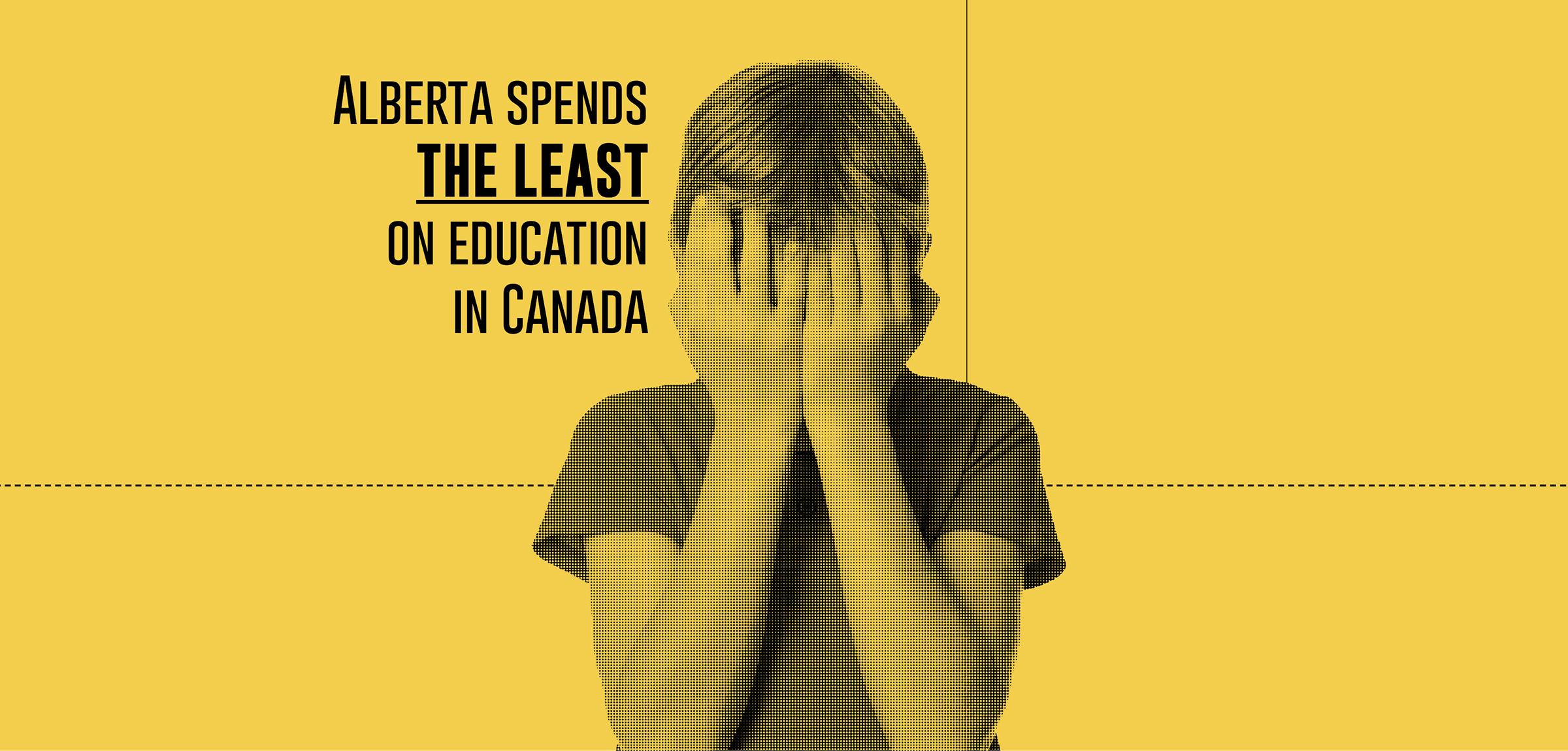For the fourth year in a row, our province has landed squarely at the bottom of the national list for per-student funding — and the gap between Alberta and the national average continues to grow. Statistics Canada released their latest data on revenue and expenditure by public school boards across Canada, and once again Alberta lags behind all other provinces in almost every measure.
The newest release from StatsCan covers the 2022–23 school year and pegs the national average school board operating expenditure at $13,692 per student. Alberta falls well below that standard, coming in at $11,464. That’s over 16 per cent below the national average, increasing the gap by three per cent from the previous year. The discrepancy between the average and Alberta’s spending has grown 11 per cent since Alberta first fell to the bottom of the scale in 2018–19.

“When looking at recent history, statistics show that our province has usually performed at or above the national average, often claiming the second or third spot,” said Neil Hepburn, ATA economist. “But since the 2014–15 school year, we’ve seen a drastic and rapid slide to the bottom.”
Hepburn points out that salary levels are also a comparison that is commonly made. He says salary, however, only tells part of the story. “We also need to look at the working conditions,” said Hepburn. “Functions such as assignable/instructional time, class size and class complexity must also be factored into the equation.”
Teacher compensation, which breaks down the teacher’s salary by how many students they teach, now sits at $8,202 per student. In this category, Alberta finds itself, once again, in tenth place and almost $1,600 below the national average. Our province has been in the last spot for the previous three years and below the national average for the last 13 years.
“We hear politicians claim our teachers are the best paid in the country,” said Hepburn. “While it is true that our salary levels are in the top half across Canada, the number of students per Alberta teacher more than offsets that statistic.”
One area of the StatsCan report where our province is above the national average is the ratio of students per teacher. Alberta again finds itself ranked tenth, with approximately 17 students per educator. The national average sits at around 12. These calculations include classroom teachers, school administrators and pedagogical support staff. However, this data remains valuable when doing comparisons across the provinces.
“Given the high ratio of students per educator in Alberta,” said Hepburn, “it’s easy to see how our teacher compensation per student works out to being the lowest in the country.”
Often, governments will make comparisons of their education funding by measuring the dollars being allocated in their provincial budget. Hepburn said that approach provides an incomplete and inaccurate picture. In some jurisdictions, the money allocated by the ministry is only part of the revenue received by the school boards. Funds from parental fees or local governments, like municipal property taxes, are not included in the provincial government expenditures.
“Provinces who don’t include those revenue streams will appear to have a much smaller education budget,” said Hepburn. “It can be a shell game. This is why looking at actual school board expenditures is so valuable — it includes all revenue sources for school boards and all expenditures.”
It is for this reason, said Hepburn, that the most accurate numbers to compare are the actual number of taxpayer education dollars being spent on each student. That is done by examining the statistics covering the per-student operating expenditures.
“While this downward trend in Alberta education funding is not new,” said Hepburn, “the current government has done nothing to reverse this trend. Let’s hope that the upcoming provincial budget 2025 changes that.”
Nunavut, Northwest Territories and the Yukon Territory are omitted from the analysis because the particular circumstances faced by school authorities in those areas are so different from school authorities in the rest of the country. ❚
The data reported here was drawn from the StatsCan tables 37-10-0064, 37-10-0065, 37-10-0007 and 37-10-0153.
In Alberta, public schools include public, Catholic and francophone schools.



